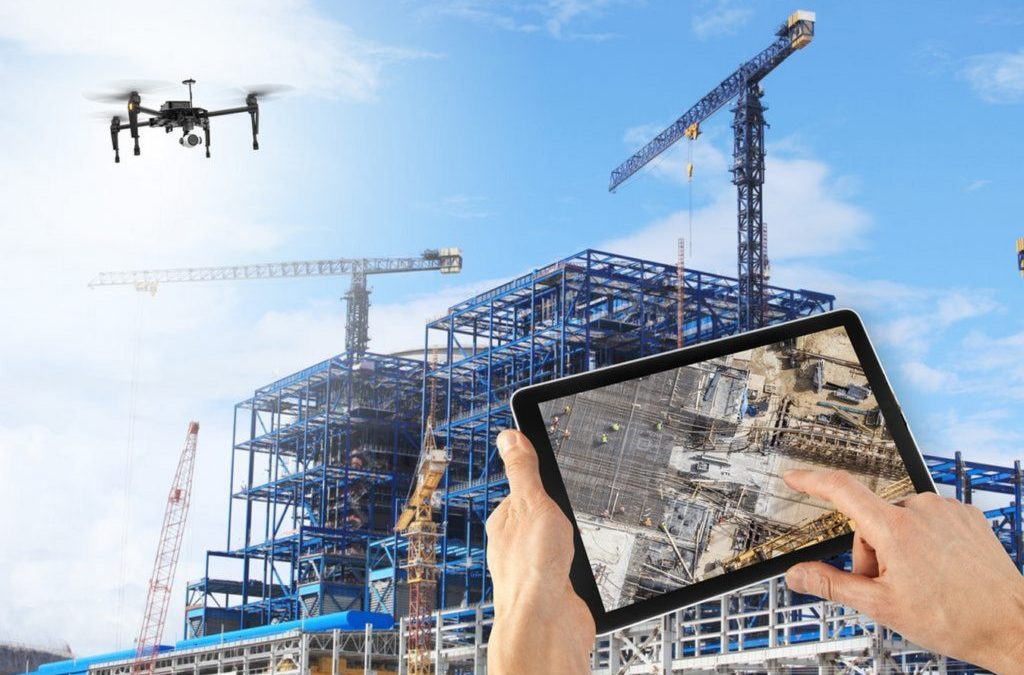The construction industry has long been known for its traditional approaches and resistance to change. However, in recent years, the sector has undergone a dramatic transformation, driven in large part by the rapid advancement of technology. From drones and 3D printing to virtual reality and artificial intelligence, these innovations are revolutionising the way we design, build, and maintain the built environment. At AGM Group, we are excited to be at the forefront of this technological revolution, embracing new tools and techniques that are helping us to deliver projects more efficiently, safely, and sustainably.
One of the most significant technological advancements in construction in recent years has been the widespread adoption of drones. These unmanned aerial vehicles (UAVs) have proven to be invaluable tools for surveying, monitoring, and inspecting construction sites, offering a level of detail and accuracy that was previously unattainable. At AGM Group, we have integrated drones into our workflow, using them to capture high-resolution aerial imagery and 3D models of our sites. This data allows us to track progress, identify potential issues, and make more informed decisions throughout the construction process.
Drones are particularly useful for large, complex projects, where traditional surveying methods can be time-consuming and costly. By using drones to quickly and accurately map out a site, we can reduce the time and resources required for surveying, enabling us to move forward with design and construction more efficiently. Drones can also be used to monitor safety on site, identifying potential hazards and ensuring that workers are following appropriate safety protocols.
Another exciting technological development in construction is the rise of 3D printing. This additive manufacturing process involves the creation of three-dimensional objects by layering materials such as concrete, plastic, or metal according to a digital model. In construction, 3D printing has the potential to revolutionise the way we build, offering faster, more efficient, and more sustainable methods of construction.
One of the most promising applications of 3D printing in construction is the creation of prefabricated building components. By 3D printing elements such as walls, floors, and roofs off-site, we can reduce construction time and waste, while also improving quality control and consistency. These components can then be transported to the construction site and assembled quickly and efficiently, reducing the overall time and cost of the project.
3D printing can also be used to create complex, customised building elements that would be difficult or impossible to produce using traditional manufacturing methods. This opens up new possibilities for architectural design, enabling the creation of intricate, unique structures that push the boundaries of what is possible in construction.
At AGM Group, we are actively exploring the potential of 3D printing in our projects, working with partners and suppliers to identify opportunities to integrate this technology into our workflow. While the technology is still in its early stages, we believe that it has the potential to significantly disrupt the construction industry, offering new ways to build faster, more efficiently, and more sustainably.
Of course, the integration of technology into construction is not without its challenges. There are concerns about the cost and complexity of implementing new technologies, as well as the need for specialised training and skills development. There are also questions about the long-term durability and reliability of some of these new technologies, particularly in the context of the harsh conditions and long lifespans of many construction projects.
However, at AGM Group, we believe that the benefits of embracing technology in construction far outweigh the challenges. By investing in new tools and techniques, we can improve the efficiency, safety, and sustainability of our projects, while also driving innovation and growth within the industry. We are committed to being at the forefront of this technological revolution, working with our clients and partners to identify new opportunities and push the boundaries of what is possible in construction.
Looking ahead, we see a bright future for technology in construction. From the continued growth of drones and 3D printing to the emergence of new technologies such as virtual and augmented reality, artificial intelligence, and the Internet of Things, there are countless opportunities for innovation and disruption within the industry. At AGM Group, we are excited to be a part of this future, working to harness the power of technology to create a more efficient, sustainable, and resilient built environment.
In conclusion, the impact of technology on construction cannot be overstated. From drones and 3D printing to virtual reality and artificial intelligence, these innovations are revolutionising the way we design, build, and maintain the built environment. At AGM Group, we are proud to be at the forefront of this technological revolution, embracing new tools and techniques that are helping us to deliver projects more efficiently, safely, and sustainably. As we move forward, we will continue to invest in technology and innovation, pushing the boundaries of what is possible in construction and creating a brighter, more sustainable future for the industry and the communities we serve.
